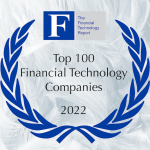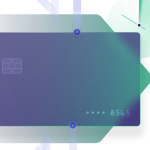Much has been made in the media about the potential of digital lending to revolutionize the commercial loan space. Among all the coverage, however, many are left with some fundamental yet important questions: what exactly does a digital commercial loan platform look like? How and why does digital lending benefit both sides of the equation: banks and customers alike?
Let’s take a look at one such platform—Eastern Bank’s Eastern Express Business Loan—and walk through the life cycle of a digital commercial loan to clarify the tremendous potential such platforms have to transform commercial lending.
Eastern Bank was at the forefront of digital commercial lending, debuting their platform in 2015 to provide quick funding for small business seeking loans up to $100,000. However, their process is similar to the many other digital lending platforms emerging onto the market.
The first step in a digital commercial loan: the small business completes a short one-page digital application. This stands in sharp contrast to the typical multi-page application documents required in traditional lending. By using data analytics, Eastern Bank and its competitors are able to streamline this step greatly.
Next, the small business borrower must be validated. Much like with a traditional business loan, a digital lender must perform due diligence on the prospective borrower. However, data modeling helps simplify this stage of the process as well, dramatically reducing the timeline.
With the application and due diligence complete, the digital lender is ready to make a loan decision—often weeks before a traditional lender utilizing a paper application could. Complex analytical models are utilized to reach the credit decision automatically. If the loan is approved, the customer can also receive the decision and all the loan parameters (loan terms, interest rate and fees) quickly and easily by logging on to the digital lender’s website or mobile app. Signing is equally quick and easy; everything can be done electronically.
The last stage is the loan funding. Because everything is electronic, a physical closing isn’t required as it typically is for traditional commercial loans. That means that funding—like all other stages in the process—is much faster. For example, Eastern Bank boasts that it can fund approved loans into the customer’s business checking account within an hour.
While there are always skeptics, this digital commercial loan process does appear to alleviate many of the pain points that small businesses complain about in the commercial lending process. For example, a 2016 Federal Reserve survey revealed that 45 percent of people are unhappy with the long waits for a traditional loan decision with 42 percent feeling that the process was cumbersome. The contrast with digital lenders was sharp: only 17 percent of those who went the digital route thought the waits were too long with only 26 percent complaining about the process’ complexity.
























